
Illustrative Math Alignment: Grade 8 Unit 2
Dilations, Similarity, and Introducing Slope
Lesson 1: Projecting and Scaling
Use the following Media4Math resources with this Illustrative Math lesson.
| Thumbnail Image | Title | Body | Curriculum Topic |
|---|---|---|---|

|
INSTRUCTIONAL RESOURCE: Math Examples 37 | INSTRUCTIONAL RESOURCE: Math Examples--Polygon Classification
This set of tutorials provides 36 examples of how to classify polygons based on side and angle characteristics. This is part of a collection of math examples for a variety of math topics. To see the complete collection of these resources, click on this link. Note: The download is a PPT file.Library of Instructional ResourcesTo see the complete library of Instructional Resources , click on this link. |
Definition of a Polygon |

|
Instructional Resource: TI-Nspire Activity: Constructing and Measuring the Area of a Polygon | In this TI-Nspire Activity, use the Geometry Tools to construct a regular polygon and measure its area using the apothem-perimeter formula. Note: The Preview is a Google Slide Show and the download is a PPT. Subscribers to Media4Math can download resources. To see the complete collection of TI graphing calculator resources, click on this Link. |
Geometric Constructions with Polygons |

|
Instructional Resource: TI-Nspire Activity: Constructing and Measuring the Area of a Polygon | In this TI-Nspire Activity, use the Geometry Tools to construct a regular polygon and measure its area using the apothem-perimeter formula. Note: The Preview is a Google Slide Show and the download is a PPT. Subscribers to Media4Math can download resources. To see the complete collection of TI graphing calculator resources, click on this Link. |
Geometric Constructions with Polygons |
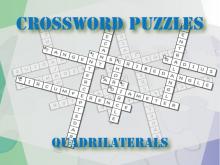
|
Interactive Crossword Puzzle--Quadrilaterals | Interactive Crossword Puzzle--Quadrilaterals
This interactive crossword puzzle tests knowledge of key terms on the topic of quadrilaterals. This is part of a collection of math games and interactives. To see the complete collection of the games, click on this link. Note: The download is the teacher's guide.Related ResourcesTo see additional resources on this topic, click on the Related Resources tab. |
Definition of a Quadrilateral |

|
Interactive Crossword Puzzle--Quadrilaterals | Interactive Crossword Puzzle--Quadrilaterals
This interactive crossword puzzle tests knowledge of key terms on the topic of quadrilaterals. This is part of a collection of math games and interactives. To see the complete collection of the games, click on this link. Note: The download is the teacher's guide.Related ResourcesTo see additional resources on this topic, click on the Related Resources tab. |
Definition of a Quadrilateral |

|
Interactive Crossword Puzzle--Quadrilaterals | Interactive Crossword Puzzle--Quadrilaterals
This interactive crossword puzzle tests knowledge of key terms on the topic of quadrilaterals. This is part of a collection of math games and interactives. To see the complete collection of the games, click on this link. Note: The download is the teacher's guide.Related ResourcesTo see additional resources on this topic, click on the Related Resources tab. |
Definition of a Quadrilateral |
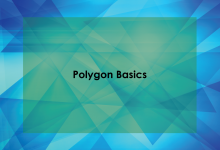
|
Math Clip Art--Geometry Basics--Polygon Basics 01 | Math Clip Art--Geometry Basics--Polygon Basics 01TopicGeometry Basics DescriptionThis image is part of a series designed to teach fundamental concepts about polygons. It serves as a title card, prominently displaying the words "Polygon Basics" to introduce students to the topic. The use of clear, bold text on a simple background helps focus attention and set the stage for the lessons to follow. |
Definition of a Polygon |

|
Math Clip Art--Geometry Basics--Polygon Basics 02 | Math Clip Art--Geometry Basics--Polygon Basics 02TopicGeometry Basics DescriptionThis image is part of a series designed to teach fundamental concepts about polygons. It presents a table that correlates the number of sides with the names of different polygons. The caption emphasizes that the number of sides determines the type of polygon, providing a clear, visual representation of this important concept. |
Definition of a Polygon |
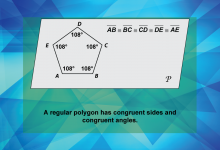
|
Math Clip Art--Geometry Basics--Polygon Basics 03 | Math Clip Art--Geometry Basics--Polygon Basics 03TopicGeometry Basics DescriptionThis image is part of a series designed to teach fundamental concepts about polygons. It features an illustration of a regular pentagon, accompanied by a caption explaining that a regular polygon has congruent sides and congruent angles. This visual representation helps students understand the defining characteristics of regular polygons. |
Definition of a Polygon |
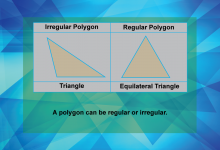
|
Math Clip Art--Geometry Basics--Polygon Basics 04 | Math Clip Art--Geometry Basics--Polygon Basics 04TopicGeometry Basics DescriptionThis image is part of a series designed to teach fundamental concepts about polygons. It presents a side-by-side comparison of an irregular triangle and a regular triangle, with a caption stating that polygons can be either regular or irregular. This visual juxtaposition effectively illustrates the difference between these two types of polygons. |
Definition of a Polygon |
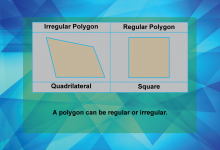
|
Math Clip Art--Geometry Basics--Polygon Basics 05 | Math Clip Art--Geometry Basics--Polygon Basics 05TopicGeometry Basics DescriptionThis image is part of a series designed to teach fundamental concepts about polygons. It showcases an irregular quadrilateral alongside a regular quadrilateral, reinforcing the concept that polygons can be either regular or irregular. This visual comparison helps students understand the distinction between these two categories of quadrilaterals. |
Definition of a Polygon |
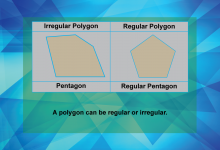
|
Math Clip Art--Geometry Basics--Polygon Basics 06 | Math Clip Art--Geometry Basics--Polygon Basics 06TopicGeometry Basics DescriptionThis image is part of a series designed to teach fundamental concepts about polygons. It presents a comparison between an irregular pentagon and a regular pentagon, further reinforcing the concept that polygons can be either regular or irregular. This visual representation helps students understand how these classifications apply to more complex polygons. |
Definition of a Polygon |

|
Math Clip Art--Geometry Basics--Polygon Basics 07 | Math Clip Art--Geometry Basics--Polygon Basics 07TopicGeometry Basics DescriptionThis image is part of a series designed to teach fundamental concepts about polygons. It showcases an irregular hexagon alongside a regular hexagon, further emphasizing the concept that polygons can be either regular or irregular. This visual comparison helps students extend their understanding of polygon classifications to shapes with even more sides. |
Definition of a Polygon |

|
Math Clip Art--Geometry Basics--Polygon Basics 08 | Math Clip Art--Geometry Basics--Polygon Basics 08TopicGeometry Basics DescriptionThis image is part of a series designed to teach fundamental concepts about polygons. It illustrates a polygon with its interior angles labeled, demonstrating that the sum of these angles relates to the number of sides. This visual representation helps students understand the relationship between a polygon's structure and its angular properties. |
Definition of a Polygon |
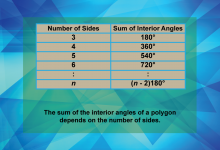
|
Math Clip Art--Geometry Basics--Polygon Basics 09 | Math Clip Art--Geometry Basics--Polygon Basics 09TopicGeometry Basics DescriptionThis image is part of a series designed to teach fundamental concepts about polygons. It presents a table that illustrates the relationship between the number of sides in a polygon, the number of triangles that can be formed within it, and the sum of its interior angles. The caption emphasizes that the sum of interior angles depends on the number of sides, reinforcing this crucial geometric principle. |
Definition of a Polygon |
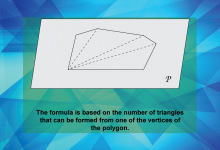
|
Math Clip Art--Geometry Basics--Polygon Basics 10 | Math Clip Art--Geometry Basics--Polygon Basics 10TopicGeometry Basics DescriptionThis image is part of a series designed to teach fundamental concepts about polygons. It features an illustration of a polygon with its exterior angles highlighted, accompanied by a caption stating that the sum of the interior angles of a polygon is based on the number of triangles that can be formed. This visual representation helps students understand a key property of polygons that remains constant regardless of the number of sides. |
Definition of a Polygon |

|
Math Clip Art--Geometry Basics--Regular Polygon 01 | Math Clip Art--Geometry Basics--Regular Polygon 01TopicGeometry Basics DescriptionThis math clip art image serves as the introductory title card for a series on regular polygons. The simple yet effective design features the words "Regular Polygons" prominently displayed, setting the stage for the educational content to follow. This image is crucial in capturing students' attention and clearly establishing the topic of study. |
Definition of a Polygon |
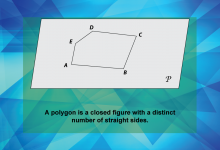
|
Math Clip Art--Geometry Basics--Regular Polygon 02 | Math Clip Art--Geometry Basics--Regular Polygon 02TopicGeometry Basics DescriptionThis math clip art image is the second in a series about regular polygons, focusing on the fundamental definition of a polygon. The illustration showcases a general polygon shape, accompanied by a clear, concise caption that defines a polygon as a closed figure with a distinct number of straight sides. |
Definition of a Polygon |

|
Math Clip Art--Geometry Basics--Regular Polygon 03 | Math Clip Art--Geometry Basics--Regular Polygon 03TopicGeometry Basics DescriptionThis math clip art image is the third in a series about regular polygons, introducing the specific definition of a regular polygon. The illustration features a regular pentagon, accompanied by a caption explaining that a regular polygon has congruent sides and congruent angles. |
Definition of a Polygon |
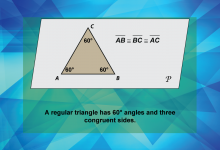
|
Math Clip Art--Geometry Basics--Regular Polygon 04 | Math Clip Art--Geometry Basics--Regular Polygon 04TopicGeometry Basics DescriptionThis math clip art image is the fourth in a series about regular polygons, focusing on the equilateral triangle. The illustration presents a clear example of an equilateral triangle, accompanied by a caption highlighting its key properties: 60° angles and three congruent sides. |
Definition of a Polygon |
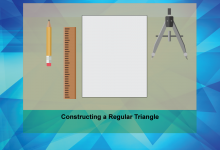
|
Math Clip Art--Geometry Basics--Regular Polygon 05 | Math Clip Art--Geometry Basics--Regular Polygon 05TopicGeometry Basics DescriptionThis math clip art image serves as a title card for the process of constructing a regular triangle. It introduces a new section in the series on regular polygons, shifting focus from definitions and properties to the practical application of geometric principles. |
Definition of a Polygon |
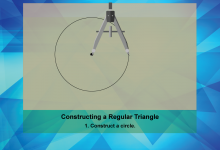
|
Math Clip Art--Geometry Basics--Regular Polygon 06 | Math Clip Art--Geometry Basics--Regular Polygon 06TopicGeometry Basics DescriptionThis math clip art image is the sixth in the series about regular polygons and the first step in constructing a regular triangle. It illustrates the initial stage of the construction process, showing a compass being used to draw a circle. The caption clearly states that this is Step 1 in constructing a regular triangle. |
Definition of a Polygon |

|
Math Clip Art--Geometry Basics--Regular Polygon 07 | Math Clip Art--Geometry Basics--Regular Polygon 07TopicGeometry Basics DescriptionThis math clip art image is the seventh in the series about regular polygons and represents Step 2 in constructing a regular triangle. The illustration shows a line drawn through the center of the circle created in the previous step. This step is crucial in establishing the base for the equilateral triangle. |
Definition of a Polygon |
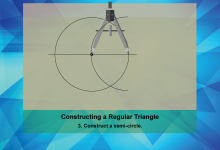
|
Math Clip Art--Geometry Basics--Regular Polygon 08 | Math Clip Art--Geometry Basics--Regular Polygon 08TopicGeometry Basics DescriptionThis math clip art image is the eighth in the series about regular polygons and illustrates Step 3 in constructing a regular triangle. The image shows the construction of a semi-circle using the compass, building upon the previous steps of drawing a full circle and a line through its center. |
Definition of a Polygon |

|
Math Clip Art--Geometry Basics--Regular Polygon 09 | Math Clip Art--Geometry Basics--Regular Polygon 09TopicGeometry Basics DescriptionThis math clip art image is the ninth in the series about regular polygons and represents Step 4 in constructing a regular triangle. The illustration highlights the centers used in the previous construction steps, emphasizing their importance in the process. |
Definition of a Polygon |
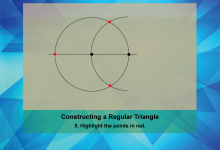
|
Math Clip Art--Geometry Basics--Regular Polygon 10 | Math Clip Art--Geometry Basics--Regular Polygon 10TopicGeometry Basics DescriptionThis math clip art image is part of a series on regular polygons, focusing on the construction of an equilateral triangle. The illustration shows Step 5 of the process, where key points are highlighted in red. This visual aid is crucial in guiding students through the precise steps of geometric construction. Using math clip art like this in geometry lessons helps students visualize abstract concepts and follow complex procedures. It bridges the gap between theoretical knowledge and practical application, making the learning process more engaging and effective. |
Definition of a Polygon |
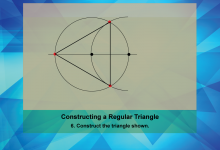
|
Math Clip Art--Geometry Basics--Regular Polygon 11 | Math Clip Art--Geometry Basics--Regular Polygon 11TopicGeometry Basics DescriptionThis math clip art image continues the series on regular polygons, illustrating Step 6 in constructing an equilateral triangle. The image shows the actual construction of the triangle based on the points and arcs established in previous steps. This visual representation is essential in demonstrating how geometric principles come together to form regular shapes. |
Definition of a Polygon |

|
Math Clip Art--Geometry Basics--Regular Polygon 12 | Math Clip Art--Geometry Basics--Regular Polygon 12TopicGeometry Basics DescriptionThis math clip art image is part of the series on regular polygons, focusing on Step 7 of constructing an equilateral triangle. The illustration emphasizes the congruent sides of the newly constructed triangle, a key characteristic of equilateral triangles. This visual aid is crucial in helping students understand the defining properties of regular polygons. |
Definition of a Polygon |
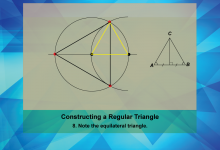
|
Math Clip Art--Geometry Basics--Regular Polygon 13 | Math Clip Art--Geometry Basics--Regular Polygon 13TopicGeometry Basics DescriptionThis math clip art image is part of the series on regular polygons, illustrating Step 8 in the construction of an equilateral triangle. The image emphasizes the completed equilateral triangle, showcasing the result of the step-by-step construction process. This visual representation is crucial in reinforcing the concept of regular polygons and their properties. |
Definition of a Polygon |
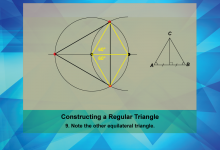
|
Math Clip Art--Geometry Basics--Regular Polygon 14 | Math Clip Art--Geometry Basics--Regular Polygon 14TopicGeometry Basics DescriptionThis math clip art image continues the series on regular polygons, focusing on Step 9 of constructing an equilateral triangle. The illustration points out another equilateral triangle formed during the construction process. This visual aid is essential in demonstrating how geometric constructions can yield multiple regular shapes simultaneously. |
Definition of a Polygon |
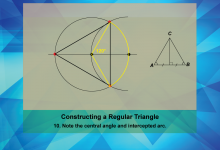
|
Math Clip Art--Geometry Basics--Regular Polygon 15 | Math Clip Art--Geometry Basics--Regular Polygon 15TopicGeometry Basics DescriptionThis math clip art image is part of the series on regular polygons, illustrating Step 10 in the construction of an equilateral triangle. The image highlights the central angle and its intercepted arc within the construction. This visual aid is crucial in demonstrating the relationship between central angles and regular polygons. |
Definition of a Polygon |
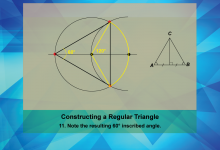
|
Math Clip Art--Geometry Basics--Regular Polygon 16 | Math Clip Art--Geometry Basics--Regular Polygon 16TopicGeometry Basics DescriptionThis math clip art image continues the series on regular polygons, focusing on Step 11 of constructing an equilateral triangle. The illustration highlights the resulting 60° inscribed angle within the construction. This visual aid is essential in demonstrating the relationship between inscribed angles and central angles in a circle. |
Definition of a Polygon |
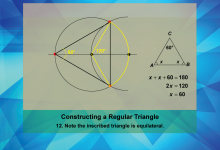
|
Math Clip Art--Geometry Basics--Regular Polygon 17 | Math Clip Art--Geometry Basics--Regular Polygon 17TopicGeometry Basics DescriptionThis math clip art image is part of the series on regular polygons, illustrating Step 12 in the construction of an equilateral triangle. The image emphasizes that the inscribed triangle within the circle is equilateral. This visual representation is crucial in demonstrating how circular properties guarantee the formation of a regular polygon. |
Definition of a Polygon |
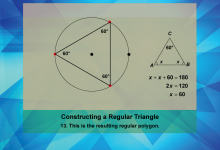
|
Math Clip Art--Geometry Basics--Regular Polygon 18 | Math Clip Art--Geometry Basics--Regular Polygon 18TopicGeometry Basics DescriptionThis math clip art image concludes the series on constructing a regular triangle, showcasing the final result of the step-by-step process. The illustration presents the completed equilateral triangle as the simplest regular polygon. This visual representation is essential in summarizing the construction process and reinforcing the concept of regular polygons. |
Definition of a Polygon |

|
Math Clip Art--Geometry Concepts--Kite Shape 1 | Math Clip Art--Kite Shape 1TopicGeometry Concepts DescriptionThis image features a kite shape, in this case a circular one. Ordinarily a kite is a quadrilateral with two pairs of adjacent equal-length sides. The diagonals intersect at right angles, and one diagonal bisects the other, creating a symmetrical shape. Kite shapes are important in geometry for understanding properties like symmetry, area, and perimeter. They are used in various mathematical applications, including tiling and design. Teacher's Script: "Examine this kite. What makes it a kite in the everyday understanding of it? Is it a kite in geometric terms?" |
Definition of a Circle, Definition of a Polygon and Definition of a Triangle |

|
Math Clip Art--Geometry Concepts--Kite Shape 10 | Math Clip Art--Kite Shape 10TopicGeometry Concepts DescriptionThis image features a kite shape, a quadrilateral with two pairs of adjacent equal-length sides and diagonals that intersect at right angles. The symmetry and unique properties of kite shapes make them interesting geometric figures. Kite shapes are used to explore properties such as symmetry, area, and perimeter. They are applicable in various mathematical contexts, including geometry and design. |
Definition of a Polygon and Definition of a Triangle |
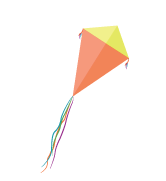
|
Math Clip Art--Geometry Concepts--Kite Shape 11 | Math Clip Art--Kite Shape 11TopicGeometry Concepts DescriptionThis image depicts a kite shape, characterized by two pairs of adjacent equal-length sides and diagonals that intersect at right angles. This geometric configuration is symmetrical and unique. Kite shapes are used to explore geometric properties such as symmetry, area, and perimeter. They are applicable in various fields, including mathematics, design, and architecture. Teacher's Script: "Look at this kite shape. How do its symmetrical properties and intersecting diagonals help us understand its geometry? What are some mathematical concepts you can explore using kite shapes?" |
Definition of a Polygon and Definition of a Triangle |

|
Math Clip Art--Geometry Concepts--Kite Shape 12 | Math Clip Art--Kite Shape 12TopicGeometry Concepts DescriptionThis image illustrates a kite shape, a quadrilateral with two pairs of adjacent equal-length sides and diagonals that intersect at right angles. The symmetry and unique properties of kite shapes make them interesting geometric figures. Kite shapes are used to explore properties such as symmetry, area, and perimeter. They are applicable in various mathematical contexts, including geometry and design. |
Definition of a Polygon and Definition of a Triangle |
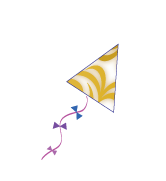
|
Math Clip Art--Geometry Concepts--Kite Shape 13 | Math Clip Art--Kite Shape 13TopicGeometry Concepts DescriptionThis image illustrates a triangular-shaped kite. Geometrically, a kite is a quadrilateral with two pairs of adjacent equal-length sides and diagonals that intersect at right angles. The symmetry and unique properties of kite shapes make them interesting geometric figures. Kite shapes are used to explore properties such as symmetry, area, and perimeter. They are applicable in various mathematical contexts, including geometry and design. Teacher's Script: "Observe this kite. How is this a kite in the everyday sense? Is this a kite in the geometric sense?" |
Definition of a Polygon and Definition of a Triangle |
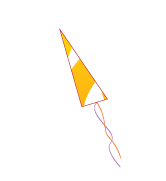
|
Math Clip Art--Geometry Concepts--Kite Shape 14 | Math Clip Art--Kite Shape 14TopicGeometry Concepts DescriptionThis image features a triangular-shaped kite. Geometrically, a kite is a quadrilateral with two pairs of adjacent equal-length sides and diagonals that intersect at right angles. The symmetry and unique properties of kite shapes make them interesting geometric figures. Kite shapes are used to explore properties such as symmetry, area, and perimeter. They are applicable in various mathematical contexts, including geometry and design. Teacher's Script: "Examine this kite. How is it a kite in the everyday sense? Is it geometrically a kite?" |
Definition of a Polygon and Definition of a Triangle |
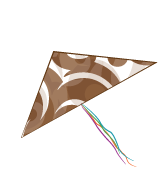
|
Math Clip Art--Geometry Concepts--Kite Shape 15 | Math Clip Art--Kite Shape 15TopicGeometry Concepts DescriptionThis image depicts a triangular-shaped kite. Geometrically, a kite is characterized by two pairs of adjacent equal-length sides and diagonals that intersect at right angles. This geometric configuration is symmetrical and unique. Kite shapes are used to explore geometric properties such as symmetry, area, and perimeter. They are applicable in various fields, including mathematics, design, and architecture. Teacher's Script: "Look at this kite. How is this a kite in the everyday sense? Is this a kite in the geometric sense?" |
Definition of a Polygon and Definition of a Triangle |
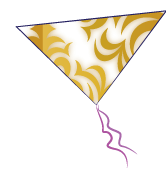
|
Math Clip Art--Geometry Concepts--Kite Shape 16 | Math Clip Art--Kite Shape 16TopicGeometry Concepts DescriptionThis image illustrates a triangular-shaped kite. Geometrically, a kite is a quadrilateral with two pairs of adjacent equal-length sides and diagonals that intersect at right angles. The symmetry and unique properties of kite shapes make them interesting geometric figures. Kite shapes are used to explore properties such as symmetry, area, and perimeter. They are applicable in various mathematical contexts, including geometry and design. Teacher's Script: "Observe this kite. How is this a kite in the everyday sense? Is this a kite in the geometric sense?" |
Definition of a Polygon and Definition of a Triangle |

|
Math Clip Art--Geometry Concepts--Kite Shape 2 | Math Clip Art--Kite Shape 2TopicGeometry Concepts DescriptionThis image depicts another variation of a kite shape, in this case a circular shape. Geometrically, a kite is characterized by two pairs of adjacent equal-length sides and diagonals that intersect at right angles. This geometric configuration is symmetrical and unique. Kite shapes are used to explore geometric properties such as symmetry, area, and perimeter. They are applicable in various fields, including mathematics, design, and architecture. Teacher's Script: "Look at this kite. How is it a kite in the everyday sense? Is it a kite in a geometric sense?" |
Definition of a Circle, Definition of a Polygon and Definition of a Triangle |

|
Math Clip Art--Geometry Concepts--Kite Shape 3 | Math Clip Art--Kite Shape 3TopicGeometry Concepts DescriptionThis image illustrates a circular kite shape. Geometrically, a kite is a a quadrilateral with two pairs of adjacent equal-length sides and diagonals that intersect at right angles. The symmetry and unique properties of kite shapes make them interesting geometric figures. Kite shapes are used to explore properties such as symmetry, area, and perimeter. They are applicable in various mathematical contexts, including geometry and design. Teacher's Script: "Observe this kite. How is a kite in the everyday sense of the word? Is it a kite in the geometric sense?" |
Definition of a Circle, Definition of a Polygon and Definition of a Triangle |

|
Math Clip Art--Geometry Concepts--Kite Shape 4 | Math Clip Art--Kite Shape 4TopicGeometry Concepts DescriptionThis image features a hexagonal kite shape. Geometrically, a kite is a quadrilateral with two pairs of adjacent equal-length sides and diagonals that intersect at right angles. The symmetry and unique properties of kite shapes make them interesting geometric figures. Kite shapes are used to explore properties such as symmetry, area, and perimeter. They are applicable in various mathematical contexts, including geometry and design. Teacher's Script: "Examine this kite. How is it a kite in the everyday sense? Is it a kite in a geometric sense?" |
Definition of a Polygon and Definition of a Triangle |

|
Math Clip Art--Geometry Concepts--Kite Shape 5 | Math Clip Art--Kite Shape 5TopicGeometry Concepts DescriptionThis image depicts a hexagonal kite shape. Geometrically, a kite is characterized by two pairs of adjacent equal-length sides and diagonals that intersect at right angles. This geometric configuration is symmetrical and unique. Kite shapes are used to explore geometric properties such as symmetry, area, and perimeter. They are applicable in various fields, including mathematics, design, and architecture. Teacher's Script: "Look at this kite. How is this a kite in the everydays sense of the word? Is it a kite in the geometric sense?" |
Definition of a Polygon and Definition of a Triangle |

|
Math Clip Art--Geometry Concepts--Kite Shape 6 | Math Clip Art--Kite Shape 6TopicGeometry Concepts DescriptionThis image illustrates a hexagonal kite shape. Geometrically, a kite is a quadrilateral with two pairs of adjacent equal-length sides and diagonals that intersect at right angles. The symmetry and unique properties of kite shapes make them interesting geometric figures. Kite shapes are used to explore properties such as symmetry, area, and perimeter. They are applicable in various mathematical contexts, including geometry and design. Teacher's Script: "Observe this kite. How is it a kite in the everyday sense? Is it a kite in the geometric sense?" |
Definition of a Polygon and Definition of a Triangle |
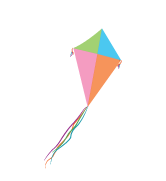
|
Math Clip Art--Geometry Concepts--Kite Shape 7 | Math Clip Art--Kite Shape 7TopicGeometry Concepts DescriptionThis image features a kite shape, a quadrilateral with two pairs of adjacent equal-length sides and diagonals that intersect at right angles. The symmetry and unique properties of kite shapes make them interesting geometric figures. Kite shapes are used to explore properties such as symmetry, area, and perimeter. They are applicable in various mathematical contexts, including geometry and design. |
Definition of a Polygon and Definition of a Triangle |
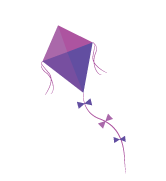
|
Math Clip Art--Geometry Concepts--Kite Shape 8 | Math Clip Art--Kite Shape 8TopicGeometry Concepts DescriptionThis image depicts a kite shape, characterized by two pairs of adjacent equal-length sides and diagonals that intersect at right angles. This geometric configuration is symmetrical and unique. Kite shapes are used to explore geometric properties such as symmetry, area, and perimeter. They are applicable in various fields, including mathematics, design, and architecture. Teacher's Script: "Look at this kite shape. How do its symmetrical properties and intersecting diagonals help us understand its geometry? What are some mathematical concepts you can explore using kite shapes?" |
Definition of a Polygon and Definition of a Triangle |

|
Math Clip Art--Geometry Concepts--Kite Shape 9 | Math Clip Art--Kite Shape 9TopicGeometry Concepts DescriptionThis image illustrates a kite shape, a quadrilateral with two pairs of adjacent equal-length sides and diagonals that intersect at right angles. The symmetry and unique properties of kite shapes make them interesting geometric figures. Kite shapes are used to explore properties such as symmetry, area, and perimeter. They are applicable in various mathematical contexts, including geometry and design. |
Definition of a Polygon and Definition of a Triangle |